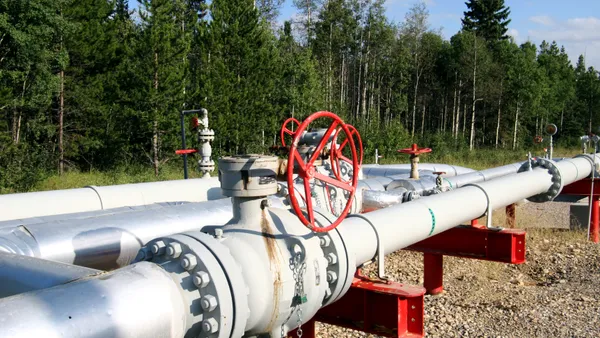In customer funded residential energy efficiency programs, ROI is the fundamental metric used by regulators to measure success. Understanding how to design Evaluation, Measurement and Verification (EM&V) that truly measures ROI for residential education programs has rapidly become a top priority for utility executives.
In the recent “Utility Residential Customer Education” survey (Check out this infographic for survey results), conducted through a partnership between NTC Corporate and Utility Dive, most utilities (68%) reported that they were unable to measure ROI for their residential customer education programs. When trying to track ROI, 69% stated they used a cost vs. savings approach. This was followed by load reduction, customer satisfaction and/or enrollment figures, in which each approach was used by just over half of the utilities surveyed.
With 76% of survey respondents reporting that residential customer education is a higher priority for their utility compared to 10 years ago, the ability to track ROI is a necessity. To heighten the challenge, 57% of utilities say the inability to prove ROI is their biggest hurdle to securing funding for their programs.
A simple calculation of cost vs. savings is shortsighted and misleading given the need to engage and educate utility customers to impact their energy efficiency behaviors. As highlighted in my two previous posts (Part 1 and Part 2), this is especially important when applying the six steps of the Marketing Hierarchy.
As you look at the hierarchy, you can see that assessments of ROI, based on purchase alone, capture only the last step in a chain of events leading to sales. Assessing marketing efforts based solely on energy savings, program sign-up or load reduction assumes the other steps in the hierarchy are unimportant in achieving future sales. That couldn’t be further from the truth. “Ignoring the impact of your marketing efforts on each stage of the hierarchy of effects is lazy, short-sighted, and will likely lead to inaccurate decisions,” said Angela Hausman in, “Hierarchy of Effects: Monitoring and Maximizing Your Marketing Efforts.”
So what types of marketing programs can utilities use that ensure easy ROI tracking and follow a proven path to purchase success? One of the best is a K-12 school program. Although these school programs teach students the benefits and basics of energy consumption, it’s not the students who are the true target market for the content. Instead, these programs are designed to ultimately impact the purchase behaviors of the parents – the residential utility customer.
A well designed and executed K-12 residential customer education program targets each of the Marketing Hierarchy steps and delivers clean ROI numbers. Here’s how it works:
Awareness: Schools offer captive audiences. By presenting a live event and related curriculum to all K-12 students in a number of schools within a utility’s distribution territory, that utility will reach every resident with school age children. This results in precise awareness numbers with no wasted effort.
Knowledge: Schools are designed as a place for teaching and learning. Evaluation and assessment are built into all school programs, with most programs using pre-test/post-test design and execution to confirm ROI.
Liking: This is where the magic of school programs really pays off for utilities. By delivering creative, exciting and fun educational events for students and teachers, the utility drives liking. ROI is easily measured at this step by how many students take the materials home to parents in addition to how many social and traditional media mentions are generated from the in-school events. Finally, by using traditional market research, utilities can measure changes in residential customer attitudes over time.
Preference: Residential customers are asked by their children to participate in the programs offered by the utility. Children are powerful influencers, especially when social issues like environmental stewardship, civic duty and community well-being are the focus.
Conviction: A key component of any K-12 utility program is the connection between the excitement created in the school through special events and curriculum, and the take-home family activities required by the classroom teacher. It’s during this stage that adult residential utility customers learn about their energy use along with their children, and ROI is measured by reported use of school curriculum at home.
Purchase: Finally, the critical call to action! K-12 residential education marketing programs must have a direct and easy way for customers to take action. Most effective are micro-sites that drive behavior through the use of energy efficiency kits, energy cycling, lighting programs, and appliance recycling or solar installation.
Even though I do not believe that assessing purchase ROI alone is the best measure of success for a utility, it’s still valuable to map the increase in sign-ups or KWh savings to ensure a utility’s marketing programs are working. The key is tracking and understanding how earlier elements in the hierarchy, such as Awareness and Knowledge, translate into results. It is within these crucial steps that, as marketers, we ensure consumers move through each stage successfully leading up to purchase.
As we know, customer engagement will only continue to become a higher priority for utility executives over the next few years. For more information on how to improve your utility’s marketing programs, download NTC’s Utility Residential Customer Education infographic and for additional industry insights get your copy of the “Utility Residential Customer Education” survey report here.
For more information on how to improve your utility’s marketing programs contact Ward Eames at [email protected].
About NTC
NTC Corporate is an award-winning educational content provider for utilities who need to engage, educate and motivate students, their families and educators. We offer a full-range of unique, turn-key marketing programs that engage current and future consumers via the education space. We inspire young people – and their families – to explore important and timely curricular subjects including: wise energy use, electrical and natural gas safety, renewable energy, science, technology, engineering and math (STEM), financial literacy, health and nutrition and environmental literacy, among others. Founded over 37 years ago in the U.S., NTC is now international with operations throughout North America and Australia. Follow NTC on Twitter: @NTCenergy.










